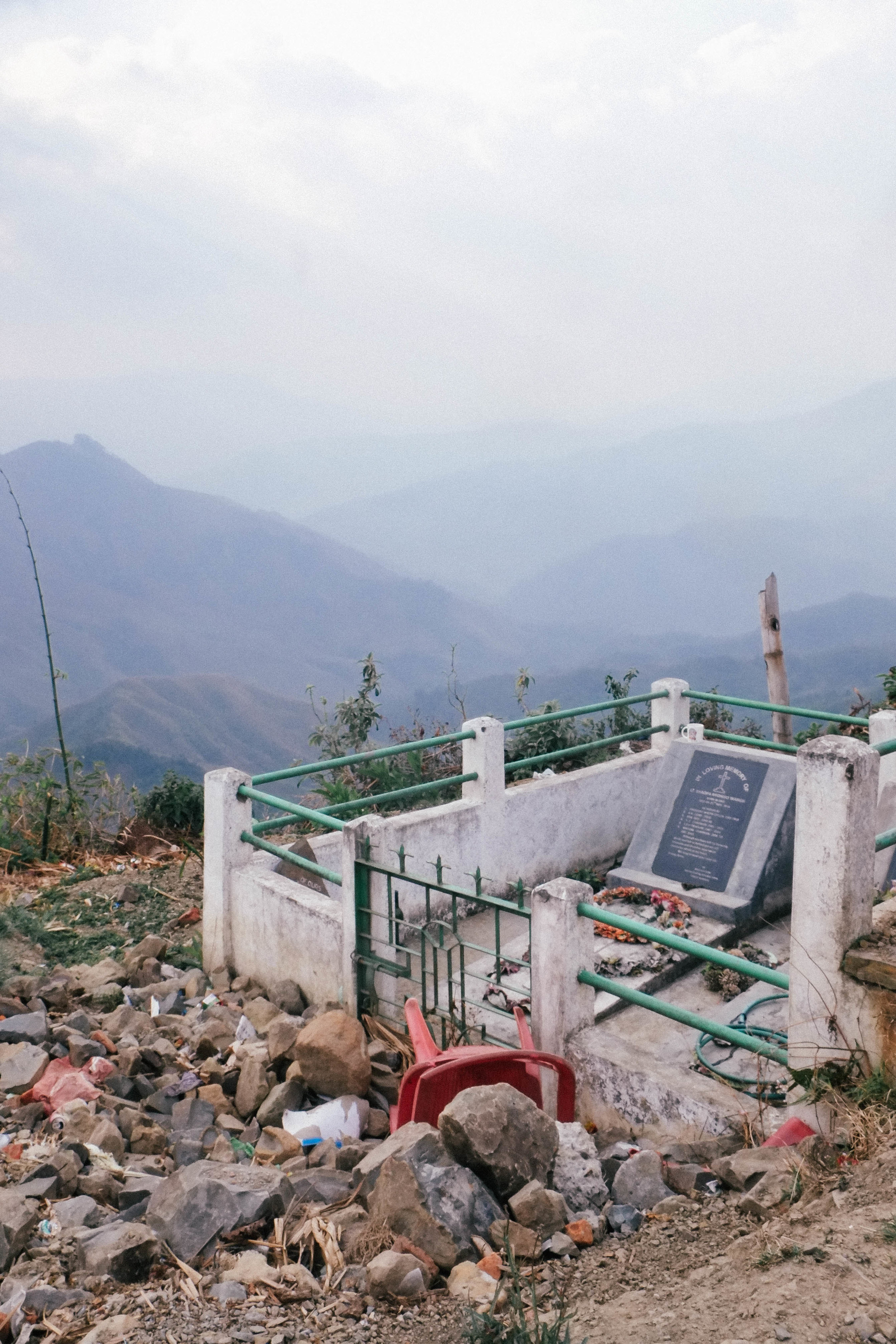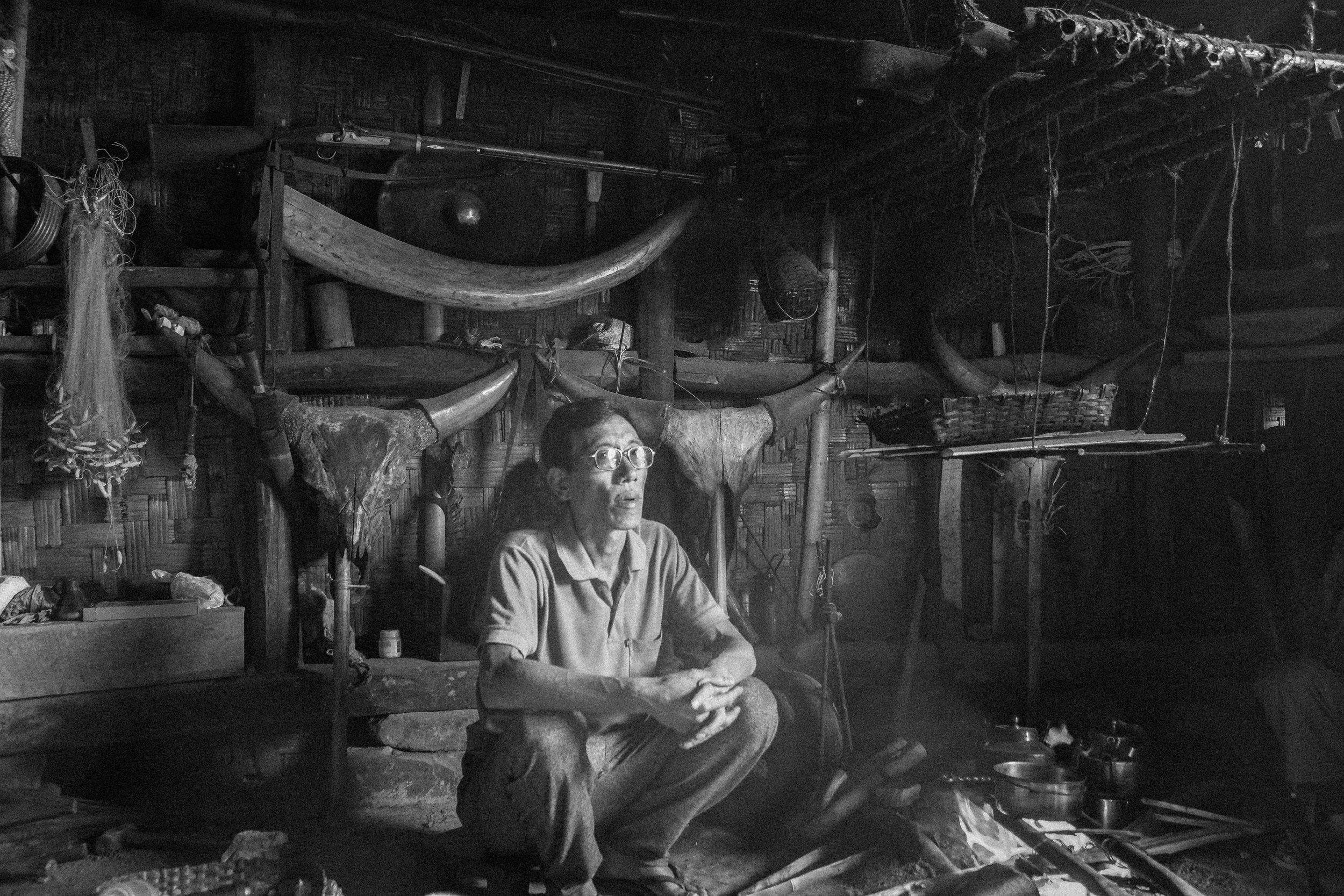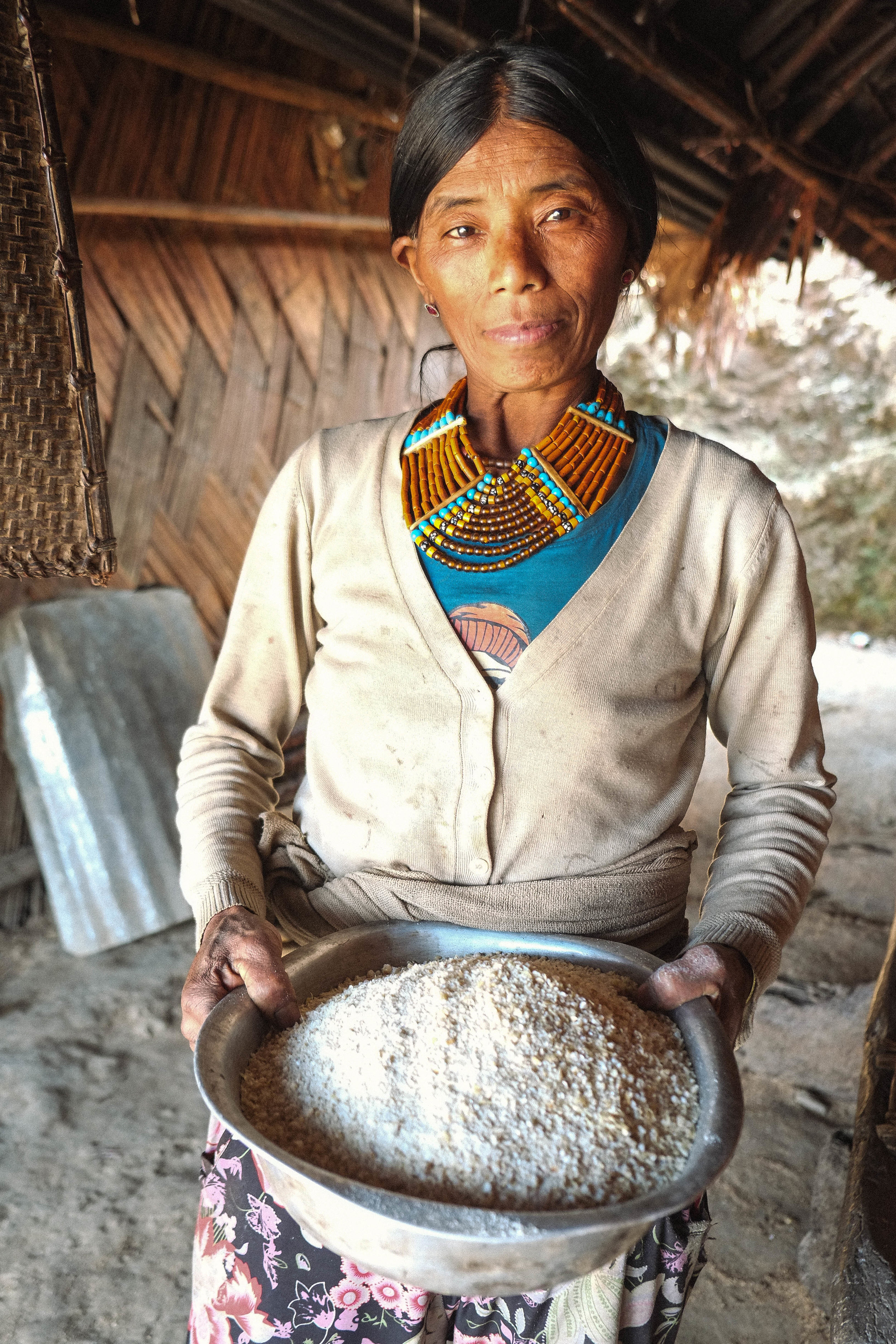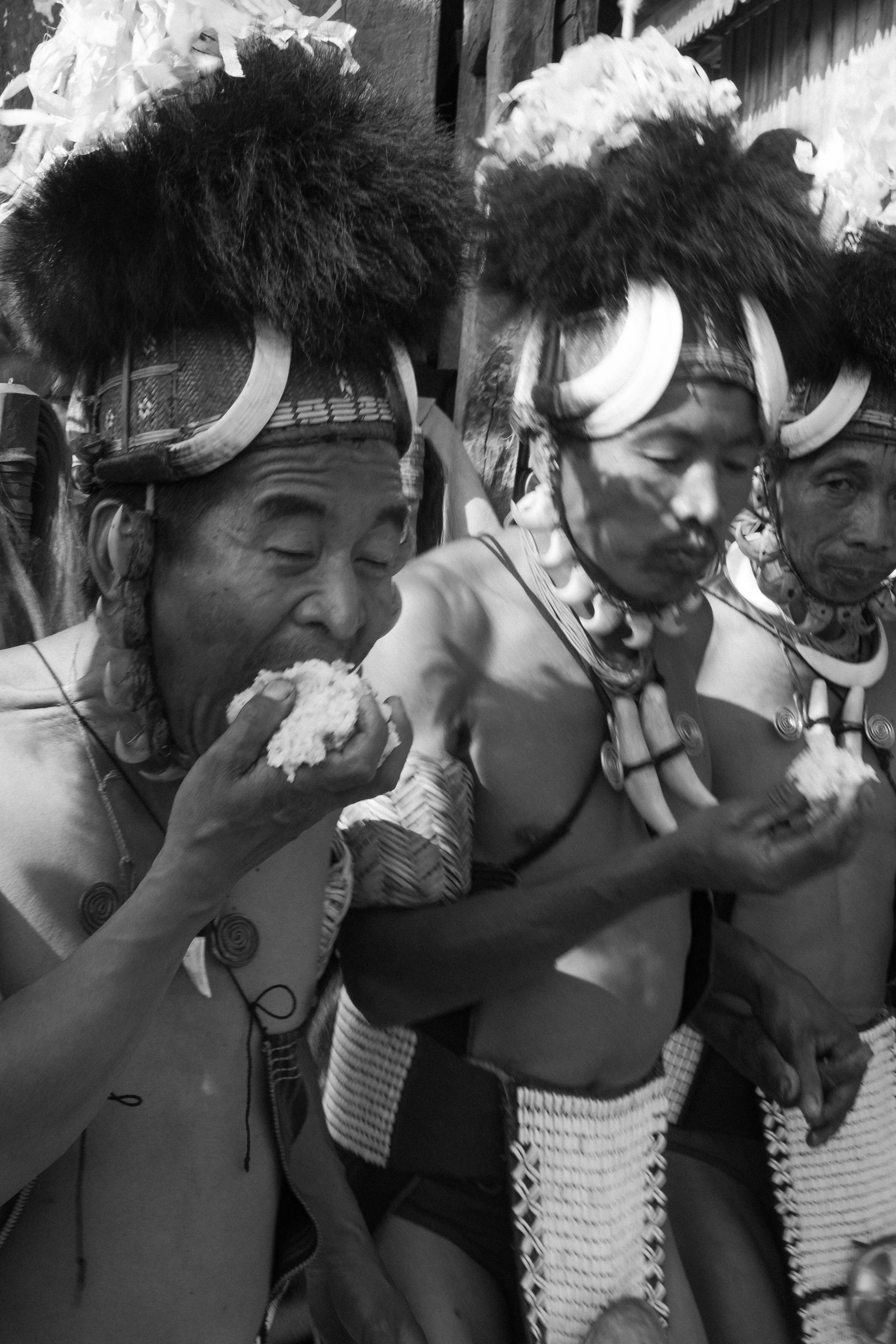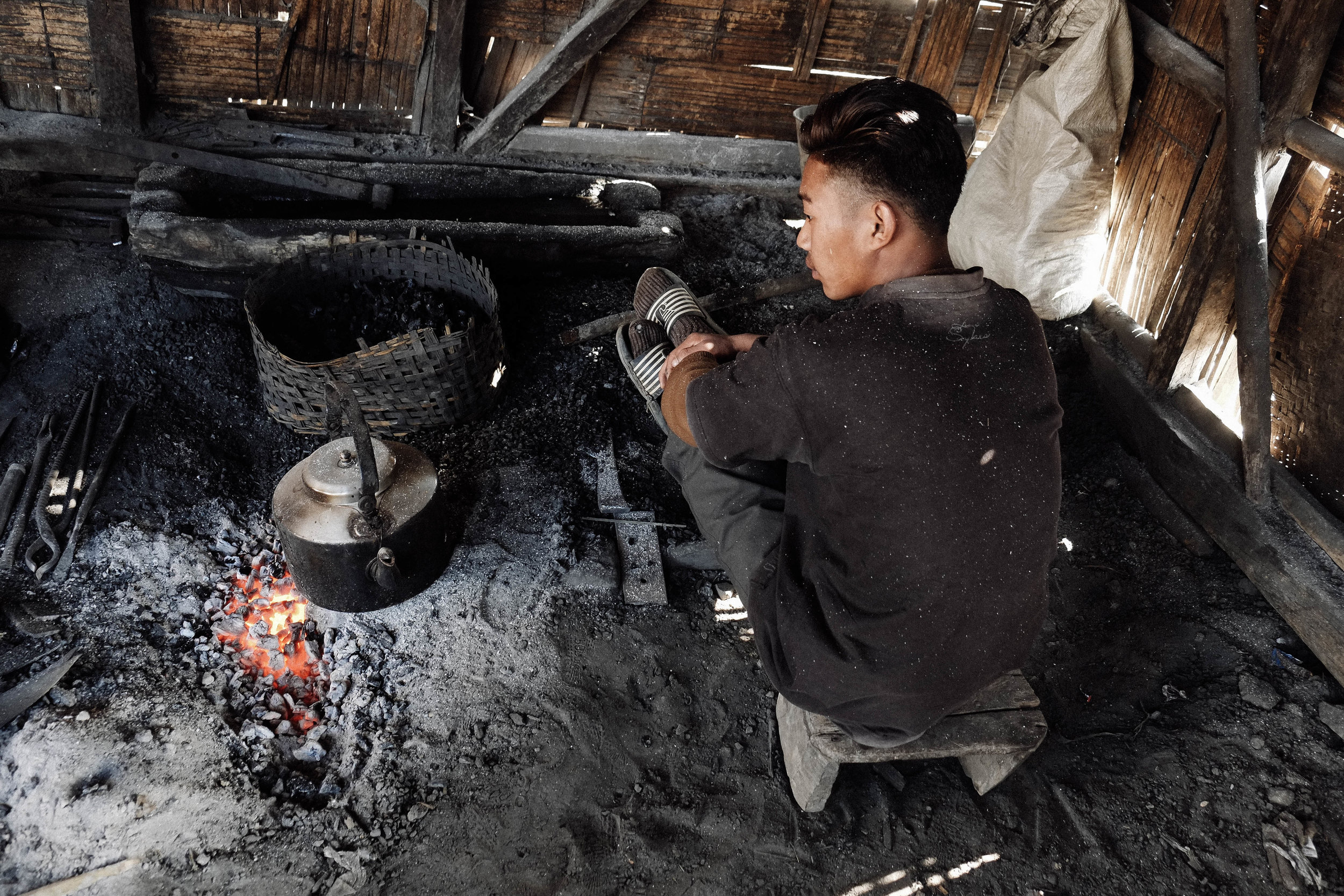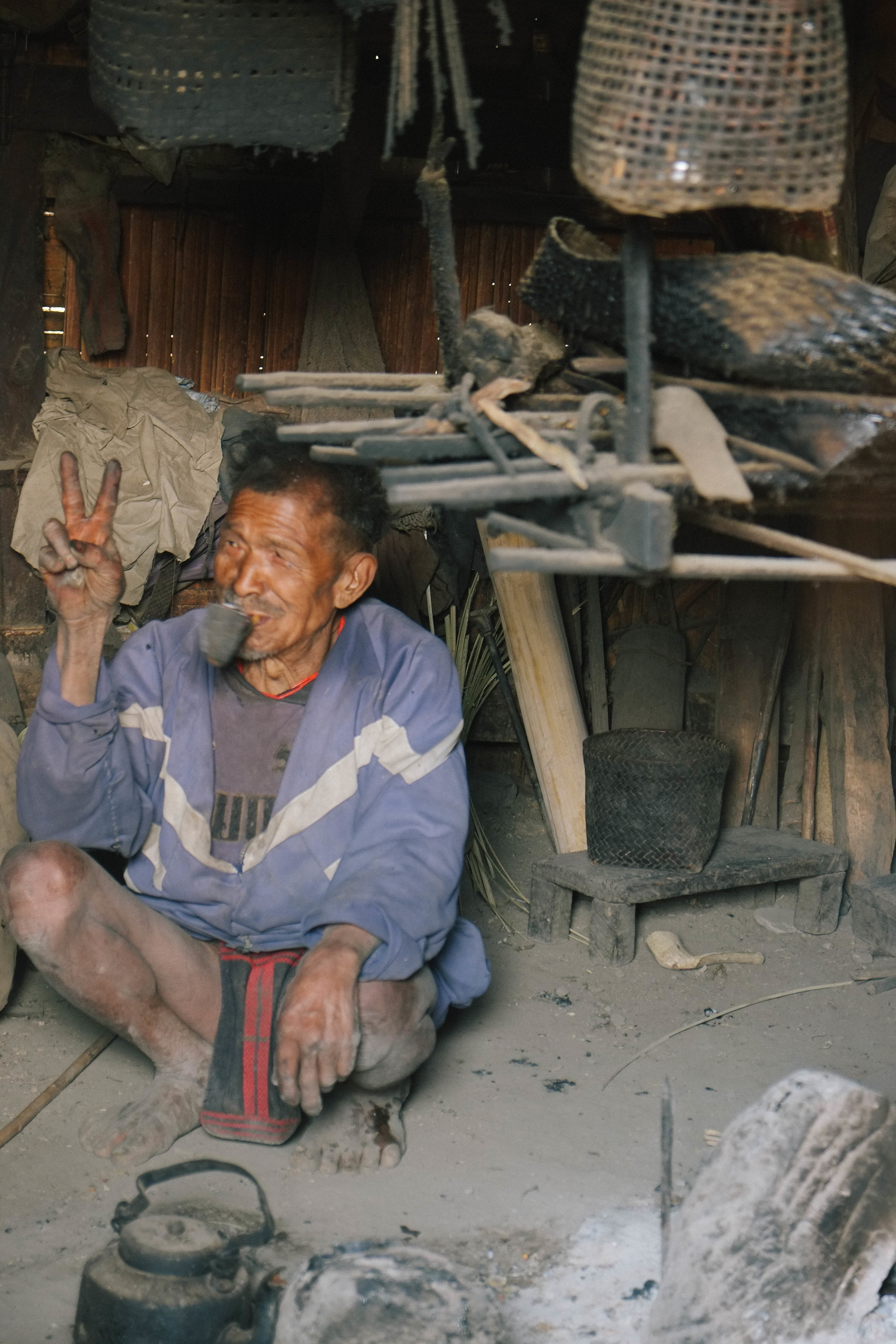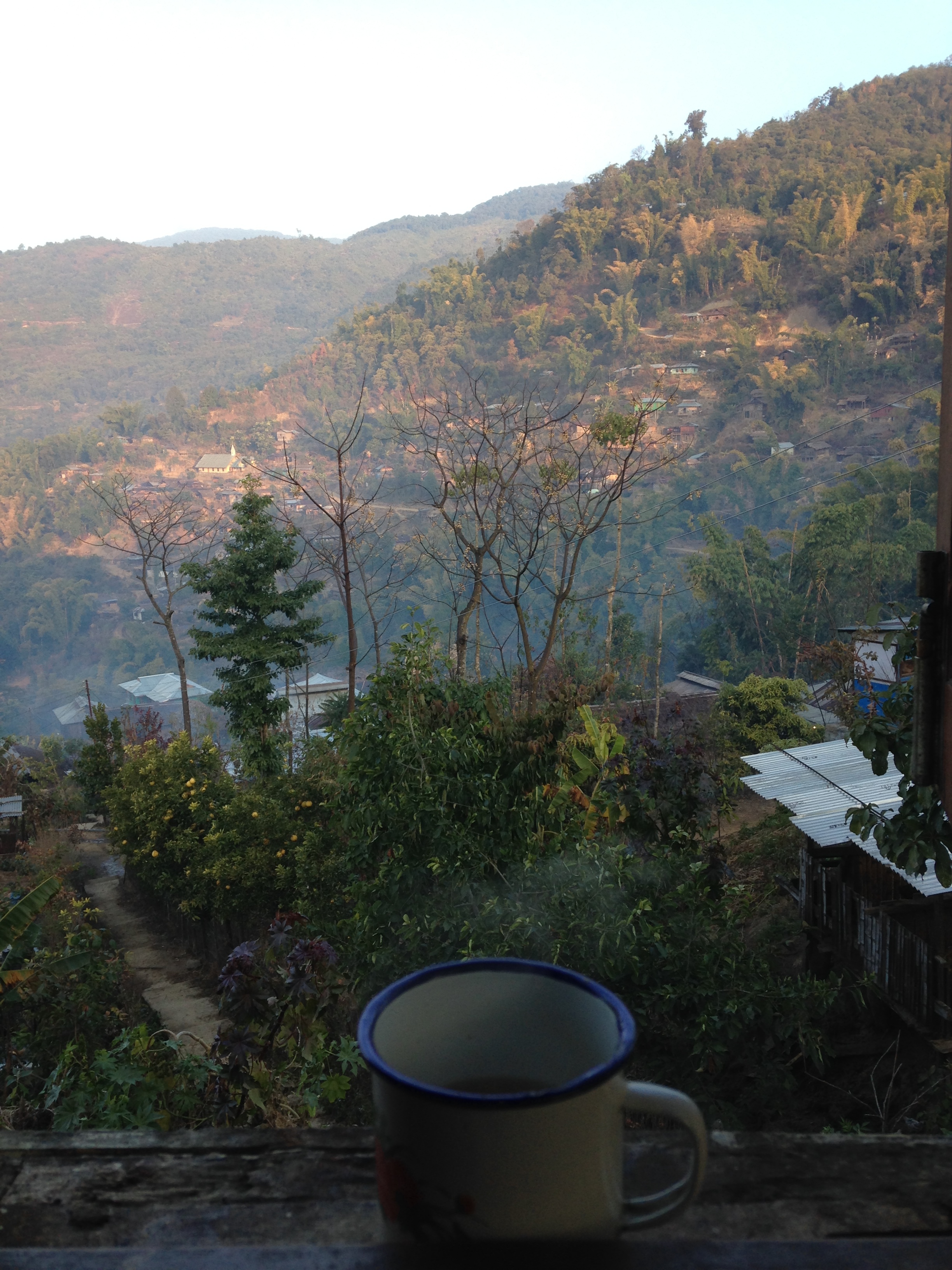It wasn’t the longest journey that I had travelled in a day but it sure felt like it. The road to Mon is not easy but it’s not what I would call perilous either. It’s mundane, boring and atrocious. The view makes and breaks a journey. Sometimes it even saves you if you have motion sickness. Not in this case.
Mon is reached easier through Assam than Nagaland and I travelled via Sonari (Assam). If I am not mistaken, there is a second route through Assam. Normally Assam will prove to be a smooth transition and journey but this felt more like the backroads with several shortcuts that I wasn’t and will never be able to keep a track of. Be at peace with that fact that you will be lost and miss a turn or two even with an experienced driver or google maps as your navigator.
Mon town looked like any of the other districts but my trip would end in Longwa, another hour and a half from Mon town. This road, believe it or not, was perfect unlike the eight hours you endure before the relief.
There is a giant tree that will grace you as you enter the village but this fairly significant looking tree is absolutely insignificant. The only outcome of the tree, therefore, would be that it gave creative freedom to weave your own tales. “Or there could be loads of snakes” said someone so I fled.
Longwa is a village in the Indo – Myanmar border but it isn’t like the other villages in the border area. The invisible demarcated line runs straight through the village so while you are taking a leisure stroll, you can never really tell when you’re in Myanmar or when you’re in India. The best way to see this is to climb up to the Aang’s house which is built on the invisible dotted border line. On one side is “Sagaing, Myanmar” while the other is “Nagaland, India”. In fact, I later discovered that even the photographs I took there were geotagged by my iPhone as being in Myanmar. It's a very captivating scenario with the villagers from both sides of the county sauntering in and out, enjoying a cup of tea and smoking some opium in a kitchen and then dispersing as suddenly as they appeared. The roads leading to and fro are foot paths but it is possible to ride a bike on them. Right below the Aang's house were gravestones of a couple facing the mountains towards Myanmar. Not a bad place to be laid to rest in my books.
Mon is home to the Konyak tribe and the Aang plays a dominant role in their culture. The Aang is the chief of a village and back in the day, he was looked upon as the King. Yet even today, he is given the same amount of respect that was given to the Aangs before. It is customary to bring a gift while visiting him.
The Konyak tribe and people are infamous for being ‘the last of the head hunters.’ The history of the Naga people has been engrained with that and being a Naga, I find it rather ridiculous when people ask if this is still practiced today and when you say no, there is a kind of disappointment (yes, really).
Quite by chance, I met Telim Nyakto, a 50-something man and a resident of the village who struck up a conversation and invited us in for a cup of black tea (or khalap as it is called) to his home. He had built a few huts as part of his home stay business for visitors and guests. He had initially wanted to build a proper house, brick and mortar and tin roof but a foreigner (I think he said American) protested against this and told him to build a traditional hut. Neither him nor any of the villagers, men and women, understood why so many foreigners came to their villagers. “There is nothing in our village! There is nothing to see” said one lady and she’s right. There’s really nothing. The view isn’t that great either and yet, people come from all over the world and sometimes stay for months. I can only put this down to wanting and feeling some sort of experience. I also suppose I wouldn’t understand the charm of it?
Mr. Nyakto’s house was like a mini museum. There were guns, wooden horns, animal bones and skulls as well a traditional headpieces and jewelleries. “They are replicas” he said when I asked.
“In 2006, I went with one of my children to the hornbill festival. We heard there were foreigners who were visiting so I took some old belts and axes (‘dao’). My son took an old necklace with a head too. We sat next to a young man and he jokingly said that we should ask for 50,000 for the necklace. So my son, who was very young at that time, asked for 50, 000 to a foreigner who was interested in it. The foreigner ran back to the car and after 15 to 20 minutes, came back with 30, 000 in cash. My son, however, demanded 50, 000. And surely, the foreigner gave him 50,000 and took away the necklace.”
He laughed and said that his son started crying. I reckon he didn’t expect anyone to really buy it for that price. Mr. Nyakto used his story as an anecdote about how so many others too were misled just like him in the beginning. None of them had realised the value and importance of these objects that they possessed. It was more about the money they got in return for it. But now, although rather late, they are coming to the realisation and in doing so, keep their older and valued items hidden from prying and travelling eyes. His wife has an old necklace made out of real Tiger’s eyes. People all over the world came and offered them Rs. 1000 for one eye but they blatantly refused.
“We will die with it and it shall be buried with us”.
I don’t exactly know how to feel about wearing a string of Tiger’s eyes around my neck but this isn’t the first time I’ve heard of such. A friend once told me that her grandmother too had one. My friend’s grandmother’s father made her a necklace out of all the Tigers he hunted in Assam when India was still under the British Raj. But that was then. There’s no point thinking or saying how wretched it sounds because that was just how it was once was.
On the flipside, when things change, people adapt and the string of visitors to Mon is spoiling them. I am not a seasoned traveller in Nagaland or anywhere in general but there are some observations one makes and remembers. In Nagaland, there’s a certain practice of tipping people when you visit the villages especially if they’ve invited you in for a meal or if they are giving you a place to stay. They don’t ask and there are some who don’t expect either but you do it out of your own good will. In Mon, however, it’s a different feeling. They expect it. They expect you to give them something. What’s worse, you are charged even for taking photographed. This doesn’t extend just to foreigners mind you, it’s for everyone. I saw a man who I immediately recognised because he charges around 200 to 500 rupees to those who want to photograph him. Being old and with the traditional face tattoo and necklace, it’s an exciting prospect to photograph so a few hundred rupees is nothing you would think. But it’s so much more than that. It’s a mentality that is passed down.
I saw this old face tattooed man when I was taken to a house to film a young man whose trade was woodwork and crafts and though I don’t speak Konyak, I understood the old man asking where I was from to my host and guide (FYI: it does not help to travel with ash blonde hair) and even though I was Naga, I saw my guide slipping a few hundreds in the hands of the younger lad who by the end of it, I wasn’t sure if he was really a craftsman (I feel the need to say that I paid back my guide in the form of a tip for this. It wasn't his tip to pay that's for sure).
In any case, that wasn’t the first instance. There was another old man, face tattoo and all, who suddenly appeared out of nowhere when we went to visit a view of the Indo-Myanmar border again asking where I was from (damn you, hair) and who just sat there and watched me take pictures. I don’t know if he hoped I would take him. I would’ve. I really wanted to but there I was (and still am!) fighting an ethical conflict. A part of me says that a few hundred rupees don’t set me back and they are old. how much longer do they have left? So what’s the big deal if they’re turning their faces into profit? After all, creative rights right? it does make sense. But the other part refuses to give in because an attitude is like bacteria. it always finds a way to affect those around it. Always looking for the shortcuts to making money never ends well and if the younger generation adapt this habit, it’ll only make them lazy and excessively dependent not just on tourists but also the government. There are already people who feel that way. "We are poor and from an underdeveloped region so the government should give us handouts" is what some say. I am not sure I want to be part of the cluster that unconsciously encourages this. I did leave some money for Mr. Nyakto though. He not only offered me tea but also shared stories about people and politics, experiences and lessons of life. I also left a tip for my guide who also hosted me but found an ethical way to do this. He housed traditional jewellery for tourists and visitors who may be interested in purchasing them as a souvenir so I contributed as a buyer.
I encountered some extremely helpful and nice people but at the same time, the not so nice too. I felt a certain fear that I encountered in the lanes of the old city in Jodhpur when I was framing up to take a shot and a group of boys suddenly appeared and started shouting and storming their way towards me. The same thing happened in Longwa too and it seemed so strange because the whole incident felt so misplaced! I also faced some difficulties while filming and photographing because no one wanted to really speak. It wasn’t even because they were uncomfortable. They just didn’t want to and ignored your very existence. I can tell you that I really didn’t know how to counter that situation. But you do what you do: keep calm.
Needless to say, I am intrigued. I am intrigued by this vast difference of behaviour and mentality and wonder if the other villages in Mon are the same. Aside from the physical exertion required for the journey to Mon, I am not sure about the place. I’d like to say I have mixed emotions about the people but I spent not more than two days in just one village so that doesn’t call for judgement in my part. I can only hope to go back again and get a better lay of the land. So until then, this entry I shall leave as partially incomplete …


